Best astrophotos of the week: unveiling the first collection of 2024!
5th Jan 2024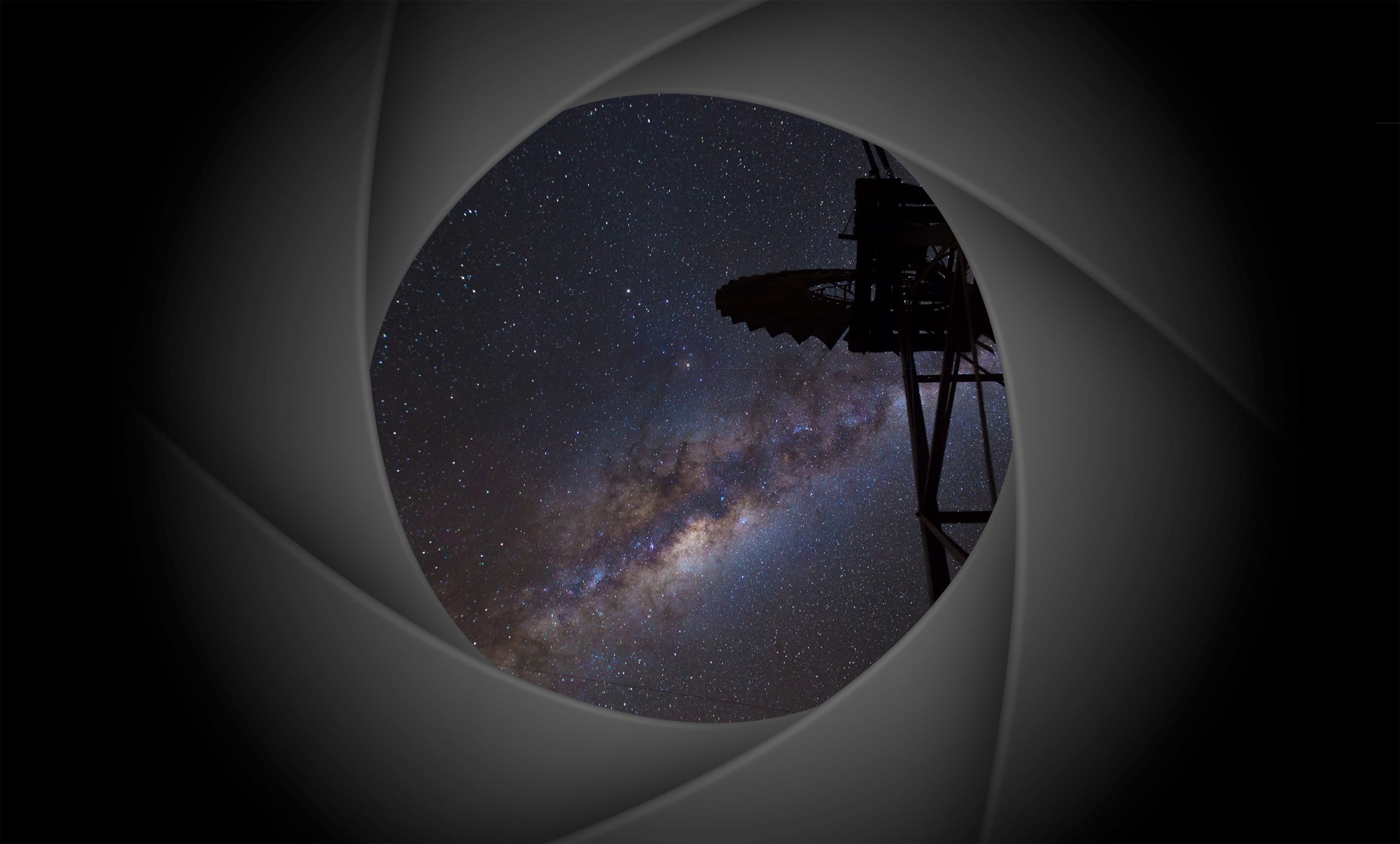
Embark on an astronomical journey with us as we reveal the first in 2024 collection of astrophotos of the week made by amateur artists from social media!
A Look Back at the Best Space Imagery of 2023
At the end of last year, we presented a new section. In it, every week we showed the best photos of space taken by amateur photographers. Thus, we managed to share dozens of incredible masterpieces with our readers. We want to express our heartfelt gratitude to all astrophotographers who shared their work online in 2023. And now let’s see what the first collection of the best astrophotos will bring us in 2024!
The Crescent Nebula by Bryan Gunsher
This week, we were obsessed with the NGC 6888, commonly referred to as the Crescent Nebula, by Bryan Gunsher. It is a celestial beauty situated in the constellation Cygnus, approximately 5,000 light-years away from Earth. This emission nebula is formed by the powerful stellar winds from a Wolf-Rayet star, WR 136, interacting with the surrounding interstellar gas. It stands as a testament to the intricate interplay between stars and the interstellar medium.
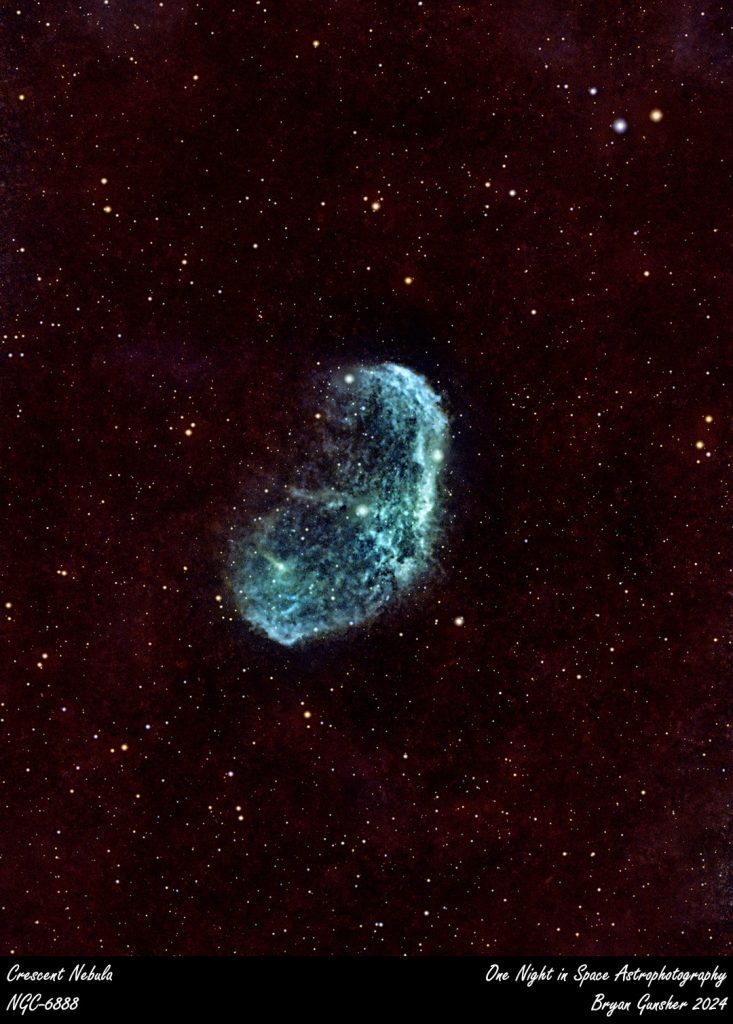
Image Credit: Bryan Gunsher
Martin Brown’s Whirlpool Galaxy
The image of the Whirlpool Galaxy by Martin Brown captured our imagination as well. Also known as Messier 51a (M51a), or NGC 5194, it is a classic example of a spiral galaxy located in the constellation Canes Venatici. As the author mentioned, the Galaxy is situated approximately 31 million light-years away from Earth. Key features of the Whirlpool Galaxy include its striking spiral arms and a bright nucleus. By the way, it played a crucial historical role in the discovery of spiral structures in galaxies. In 1845, Lord Rosse, using a large telescope, observed and sketched the Whirlpool Galaxy, providing early evidence for the spiral nature of certain celestial objects.
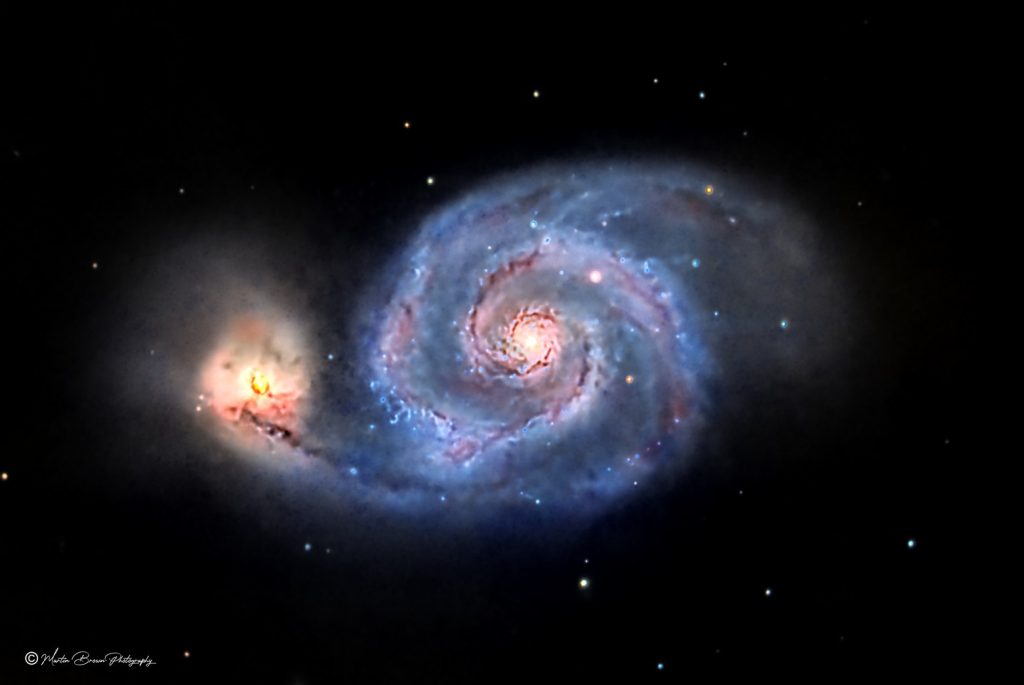
Image Credit: Martin Brown
The Thor’s Helmet by Bill Bonar
The next astrophoto that impressed us is the Thor’s Helmet Nebula by Bill Bonar, or NGC 2359. As the author noted, it is an emission nebula in the constellation Canis Major. The nebula is approximately 12000 light years away and 30 light-years across. At the heart of this celestial spectacle lies the Wolf-Rayet star WR7. It represents an intensely hot star that serves as the central source of energy, causing the surrounding gas to emit the vibrant hues seen in the nebula. Just have a look at those purple and blue raws on the black sky full of stars, aren’t they magnetic?
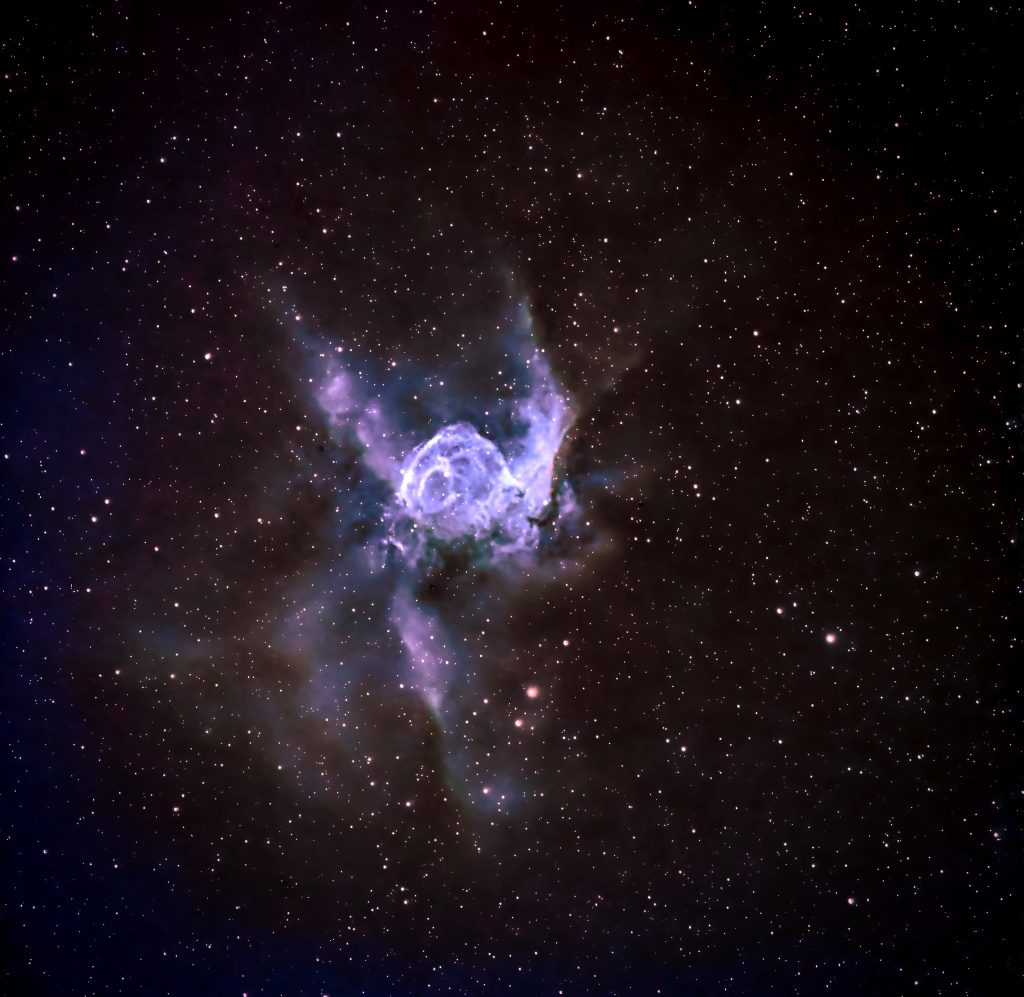
Image Credit: Bill Bonar
Dawid Glawdzin’s Soul Nebula
A splash of colours – this is what comes to mind at the first glimpse of Dawad Gawdzin’s astrophoto of the Soul Nebula! The interplay of light and shadow, even under lunar brightness, adds an extra layer of fascination to this stunning astrophoto. This visual delight, also known as IC 1848, is an emission nebula located in the constellation Cassiopeia. This stunning region of space is characterized by intricate filaments of glowing hydrogen gas, illuminated by the radiation from nearby hot, young stars.
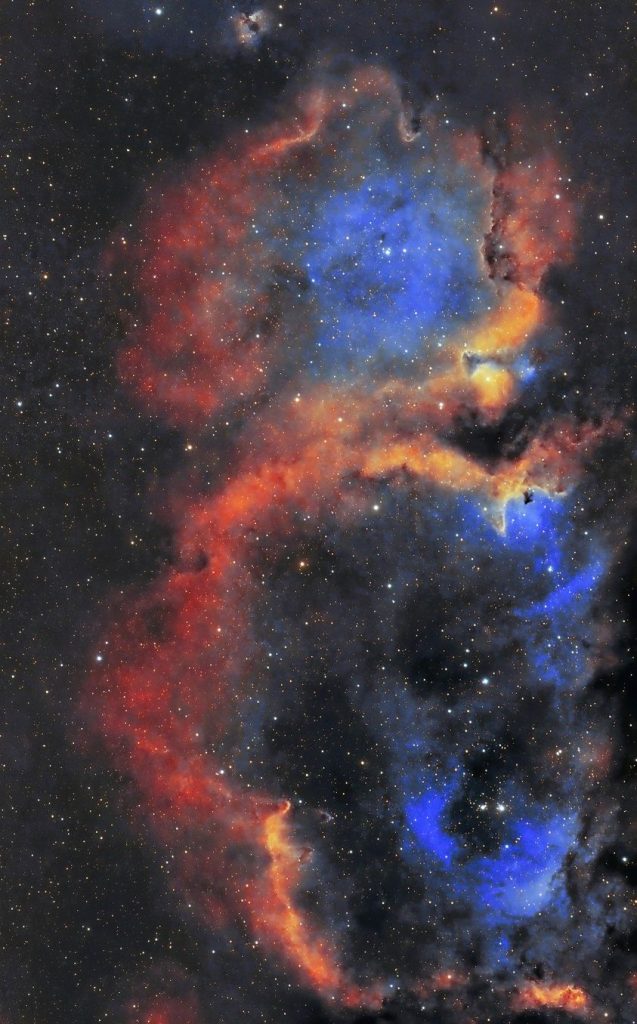
Image Credit: Dawid Glawdzin
The Pumpkin Galaxy by Mike Selby
The Pumpkin Galaxy astrophoto by Mike Selby represents a fascinating blend of luminous hues, with hints of orange, contributing to its unique nickname. Also known as NGC 2293, it is a lenticular galaxy located 105 million light-years away in the constellation Canis Major, the author says. The galaxy is now in the early stages of a collision and merger with NGC 2292. It is likely that when the merger is complete, the pair will become a giant elliptical galaxy. Both galaxies have massive black holes, and there is an arm of newly forming stars present.
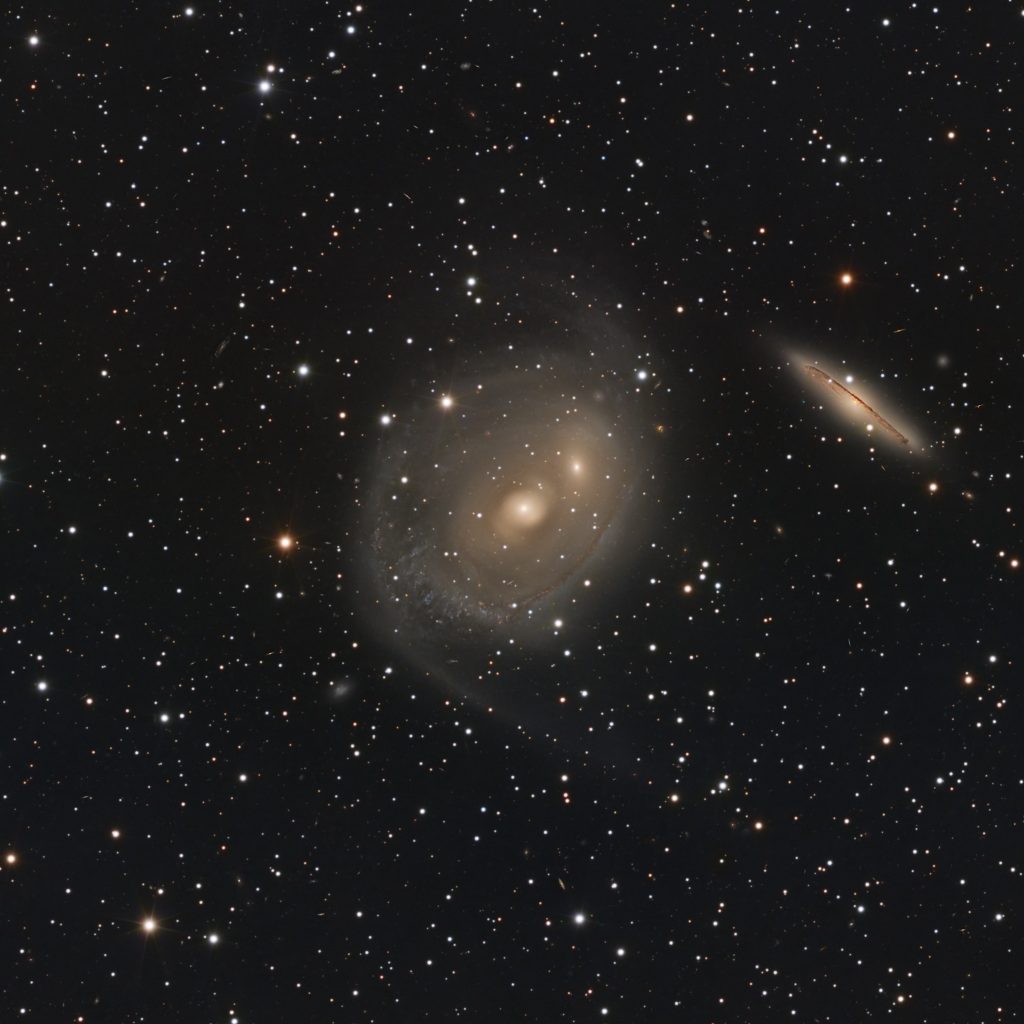
Image Credit: Mike Selby
The Fire Nebula and the Orion Nebula by Christian Simunic
Christian Simunic’s astrophoto of the Fire Nebula (NGC 2024) and the Orion Nebula (M42) reminds a scattering of bright Christmas lights in total darkness. As the festive season is not over yet, we couldn’t ignore this cosmic spectacle! These nebulas are fascinating celestial formations located in the Orion Molecular Cloud Complex. Many often compare the Fire Nebula’s distinctive shape to a blazing flame, which is why it is named as such. The Orion Nebula, which repeatedly appeared in our collections, is one of the brightest nebulae in the night sky. Together, they display the essence of a cosmic holiday celebration.
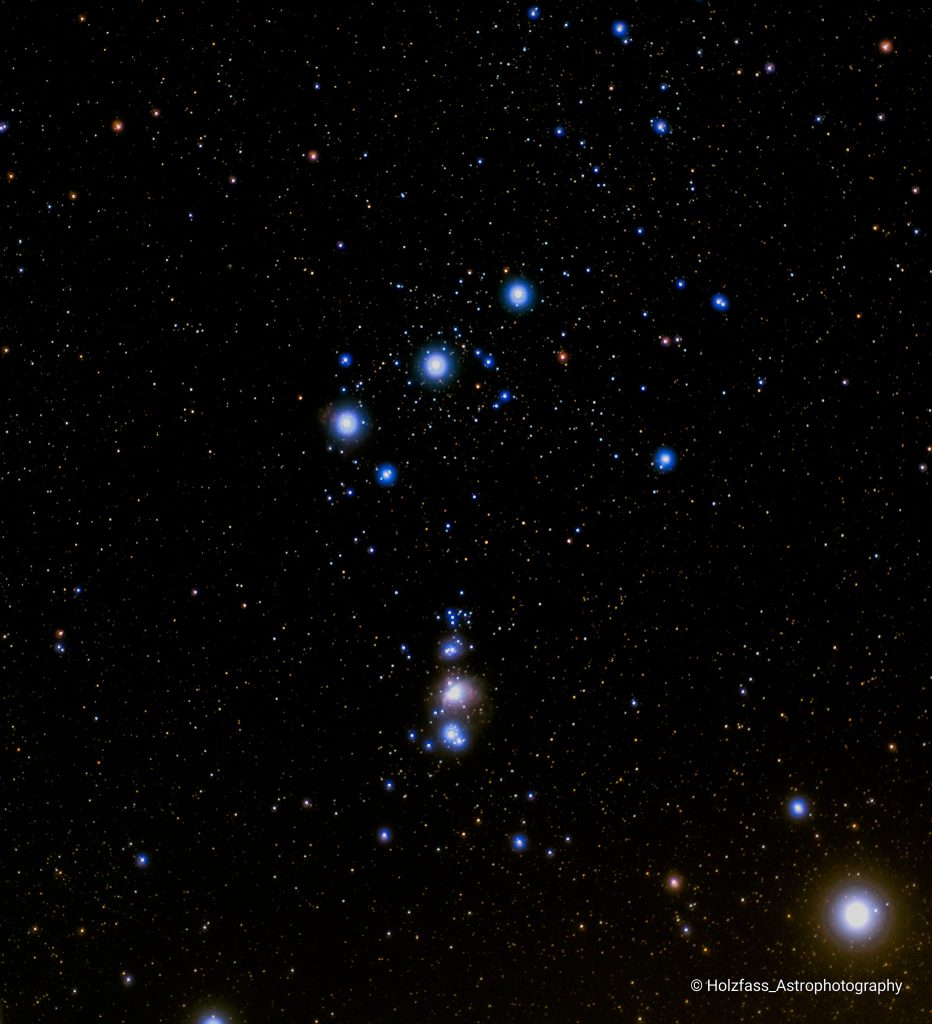
Image Credit: Christian Simunic
The Seagull Nebula by “Iwas There”
Finally, the last astrophoto in this week’s collection is The Seagull Nebula by the author “Iwas There”. As the photographer mentioned, IC 2177 is a large region of nebulosity located approximately 3,650 light-years away in the constellation Monoceros (the Unicorn), on the border with Canis Major. The nebula got its name for its distinctive shape that resembles a seagull in flight. The darker areas, often seen as the “wings” of the seagull, are composed of interstellar dust that absorbs and scatters the light emitted by the surrounding hydrogen gas. Notably, the brighter regions represent ionized hydrogen gas that emits light in various wavelengths, producing the nebula’s overall luminous appearance.
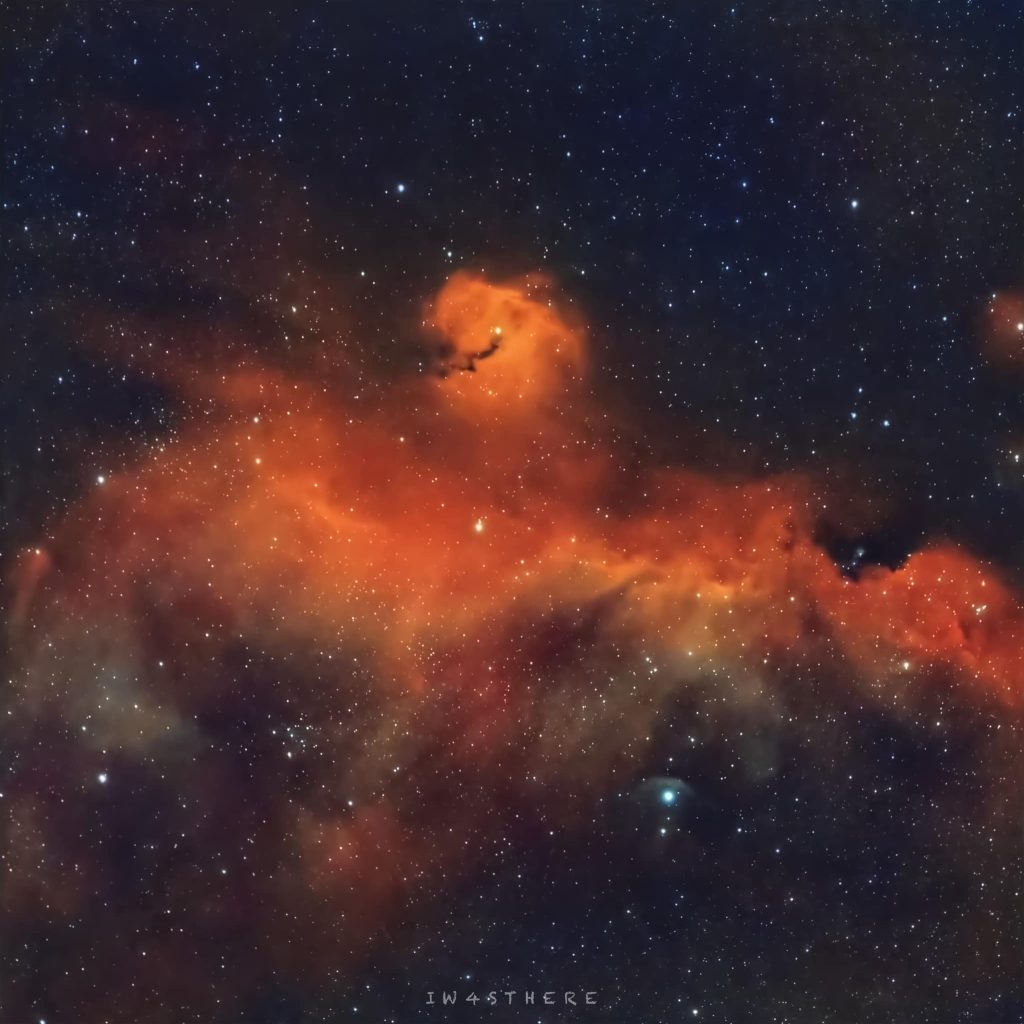
Image Credit: Iwas There
Hope you enjoy these masterpieces as much as we do! Stay tuned for more cosmic wonders in the coming weeks as we continue to explore the beauty of our universe through the lens of astrophotography. Keep looking up, and may the cosmos continue to inspire awe and wonder in each and every one of us!




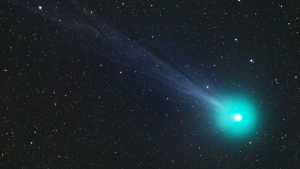

Thank you for your comment! It will be visible on the site after moderation.